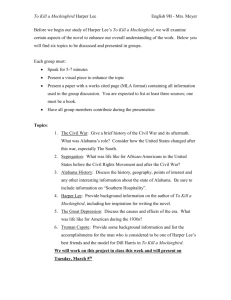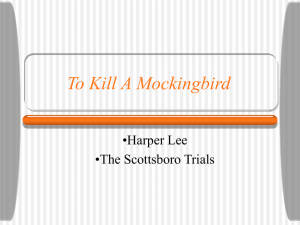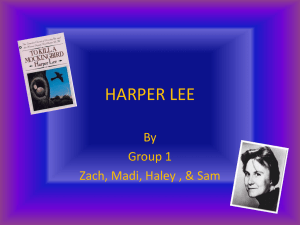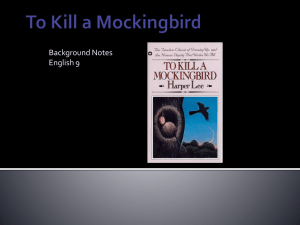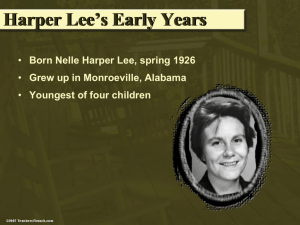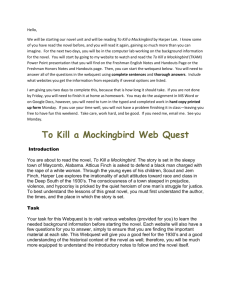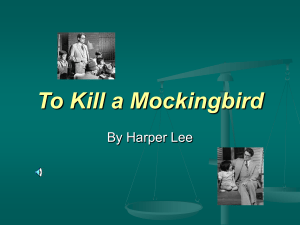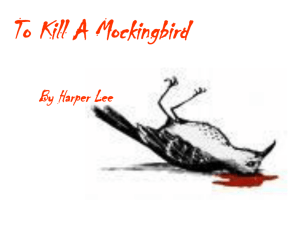ABOUT THE AUTHOR
advertisement
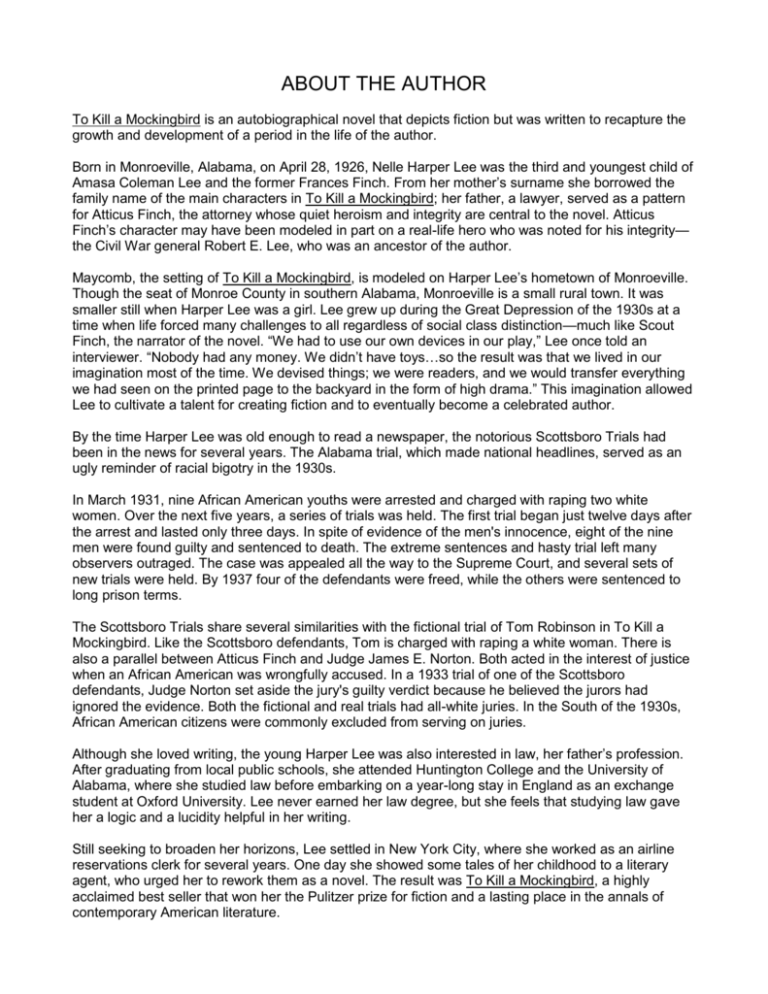
ABOUT THE AUTHOR To Kill a Mockingbird is an autobiographical novel that depicts fiction but was written to recapture the growth and development of a period in the life of the author. Born in Monroeville, Alabama, on April 28, 1926, Nelle Harper Lee was the third and youngest child of Amasa Coleman Lee and the former Frances Finch. From her mother’s surname she borrowed the family name of the main characters in To Kill a Mockingbird; her father, a lawyer, served as a pattern for Atticus Finch, the attorney whose quiet heroism and integrity are central to the novel. Atticus Finch’s character may have been modeled in part on a real-life hero who was noted for his integrity— the Civil War general Robert E. Lee, who was an ancestor of the author. Maycomb, the setting of To Kill a Mockingbird, is modeled on Harper Lee’s hometown of Monroeville. Though the seat of Monroe County in southern Alabama, Monroeville is a small rural town. It was smaller still when Harper Lee was a girl. Lee grew up during the Great Depression of the 1930s at a time when life forced many challenges to all regardless of social class distinction—much like Scout Finch, the narrator of the novel. “We had to use our own devices in our play,” Lee once told an interviewer. “Nobody had any money. We didn’t have toys…so the result was that we lived in our imagination most of the time. We devised things; we were readers, and we would transfer everything we had seen on the printed page to the backyard in the form of high drama.” This imagination allowed Lee to cultivate a talent for creating fiction and to eventually become a celebrated author. By the time Harper Lee was old enough to read a newspaper, the notorious Scottsboro Trials had been in the news for several years. The Alabama trial, which made national headlines, served as an ugly reminder of racial bigotry in the 1930s. In March 1931, nine African American youths were arrested and charged with raping two white women. Over the next five years, a series of trials was held. The first trial began just twelve days after the arrest and lasted only three days. In spite of evidence of the men's innocence, eight of the nine men were found guilty and sentenced to death. The extreme sentences and hasty trial left many observers outraged. The case was appealed all the way to the Supreme Court, and several sets of new trials were held. By 1937 four of the defendants were freed, while the others were sentenced to long prison terms. The Scottsboro Trials share several similarities with the fictional trial of Tom Robinson in To Kill a Mockingbird. Like the Scottsboro defendants, Tom is charged with raping a white woman. There is also a parallel between Atticus Finch and Judge James E. Norton. Both acted in the interest of justice when an African American was wrongfully accused. In a 1933 trial of one of the Scottsboro defendants, Judge Norton set aside the jury's guilty verdict because he believed the jurors had ignored the evidence. Both the fictional and real trials had all-white juries. In the South of the 1930s, African American citizens were commonly excluded from serving on juries. Although she loved writing, the young Harper Lee was also interested in law, her father’s profession. After graduating from local public schools, she attended Huntington College and the University of Alabama, where she studied law before embarking on a year-long stay in England as an exchange student at Oxford University. Lee never earned her law degree, but she feels that studying law gave her a logic and a lucidity helpful in her writing. Still seeking to broaden her horizons, Lee settled in New York City, where she worked as an airline reservations clerk for several years. One day she showed some tales of her childhood to a literary agent, who urged her to rework them as a novel. The result was To Kill a Mockingbird, a highly acclaimed best seller that won her the Pulitzer prize for fiction and a lasting place in the annals of contemporary American literature.
